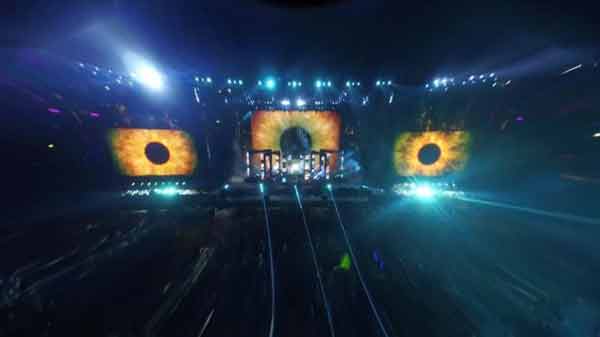
California, US (BBN)-YouTube is introducing live-streamed 360-degree videos on its service.
The Google-owned platform said select concerts from California's Coachella festival would be the first to use the virtual reality facility, reports BBC.
In addition, it announced videos on its service could now be enhanced with "spatial audio", which simulates the effect of sounds coming from different directions and distances.
One expert said the innovation could greatly enhance VR experiences.
The announcements were timed to coincide with the National Association of Broadcasters (NAB) conference in Las Vegas, where several new virtual reality products are being launched.
GoPro, Adobe and Sky Italia are among those demoing new tech at the event.
Fast connection
YouTube made it possible to play interactive 360-degree videos on its site just over a year ago.
If viewed on a laptop, viewers can use a mouse to adjust their perspective.
But if watched on a smartphone or VR headset, the experience becomes more immersive, as changes in viewpoint correspond to the movements of the device being used.
Until now, clips had to be uploaded to YouTube in their entirety and processed before they could be played back.
"From musicians to athletes to brands, creators have done some incredible things with this technology," blogged YouTube executive Neal Mohgan ahead of his NAB presentation.
"Now they'll be able to do even more to bring fans directly into their world, with 360-degree live-streaming."
Anyone owning a compatible 360-degree camera and the ability to upload video at between 10Mbps and 20Mbps - which is above the norm - can also broadcast videos of their own.
The move gives YouTube an edge over its rival Facebook, which lets users post either 360-degree clips or live streams, but not videos that combine both functions.
"We're seeing a lot of interest in virtual reality driven by the surge in affordable VR headsets that use smartphones as their screens," said Chris Green, a tech analyst at the business consultancy Lewis .
"And we're definitely at the land-grab stage at the moment. YouTube, Facebook - and I suspect a few others that will emerge very shortly - are going to push hard to be as dominant as early as possible."
Surround sound
YouTube also aims to gain an advantage by adding support for binaural recordings.
Also known as "3D audio", this means soundscapes recorded with special microphones can be panned to match the view, simulating the source of a noise moving around the user's head.
This should deliver a greater sense of presence.
"When you use your eyes, you are looking with a field-of-view of at best 120 to 180-degrees, depending on who you are," said Dr Gavin Kearney, an audio researcher at the University of York.
"But sounds are omni-directional - they are all around us.
"So, binaural audio is important from the aspect of VR because it lends itself to the realism, the immersion, of the experience.
"If you have good visuals but poor audio cues, it breaks the illusion of the reality you are trying to create. But with good binaural audio, it's much more plausible."
Headphones must be worn for the effect to be created, and it will only work via YouTube's Android app on pre-recorded clips at launch.
BBN/SK/AD